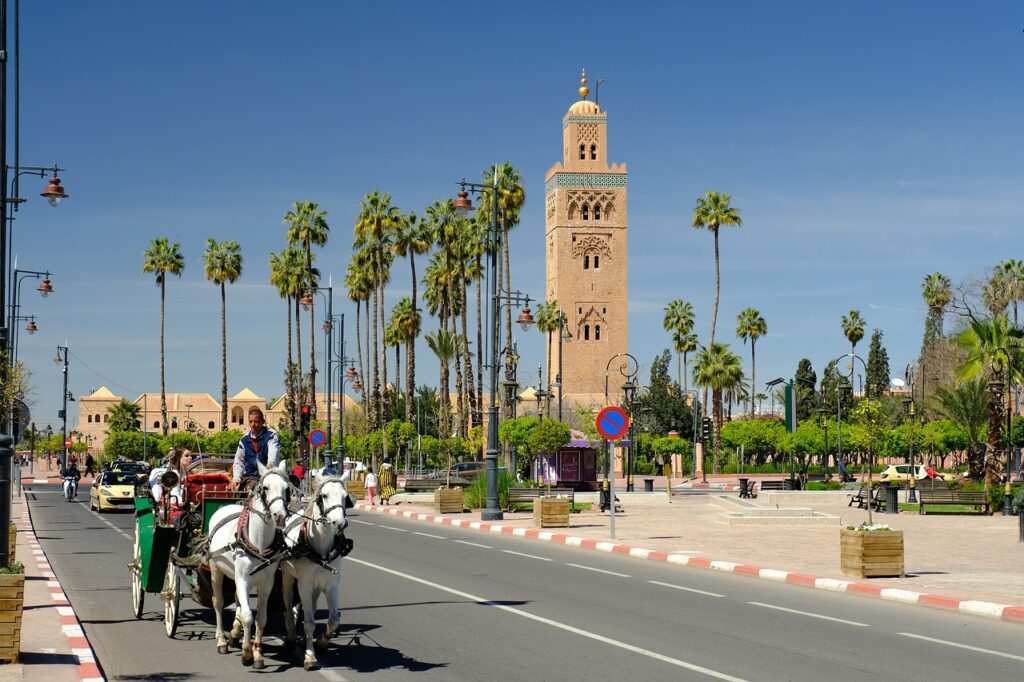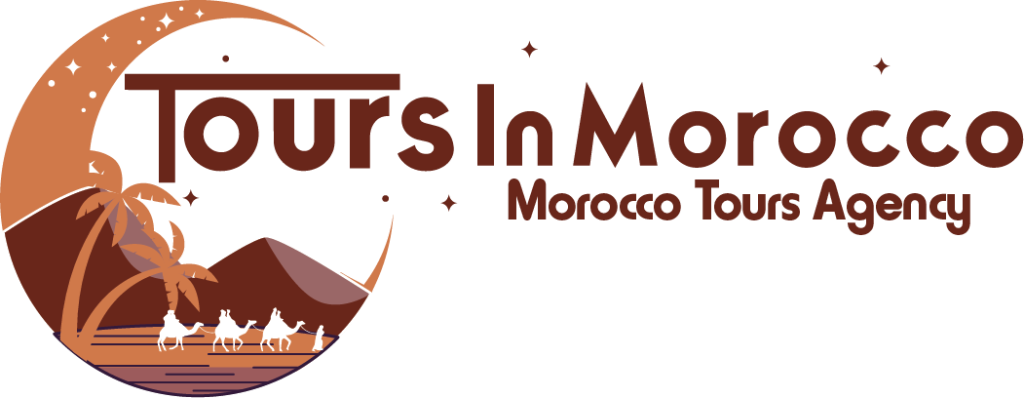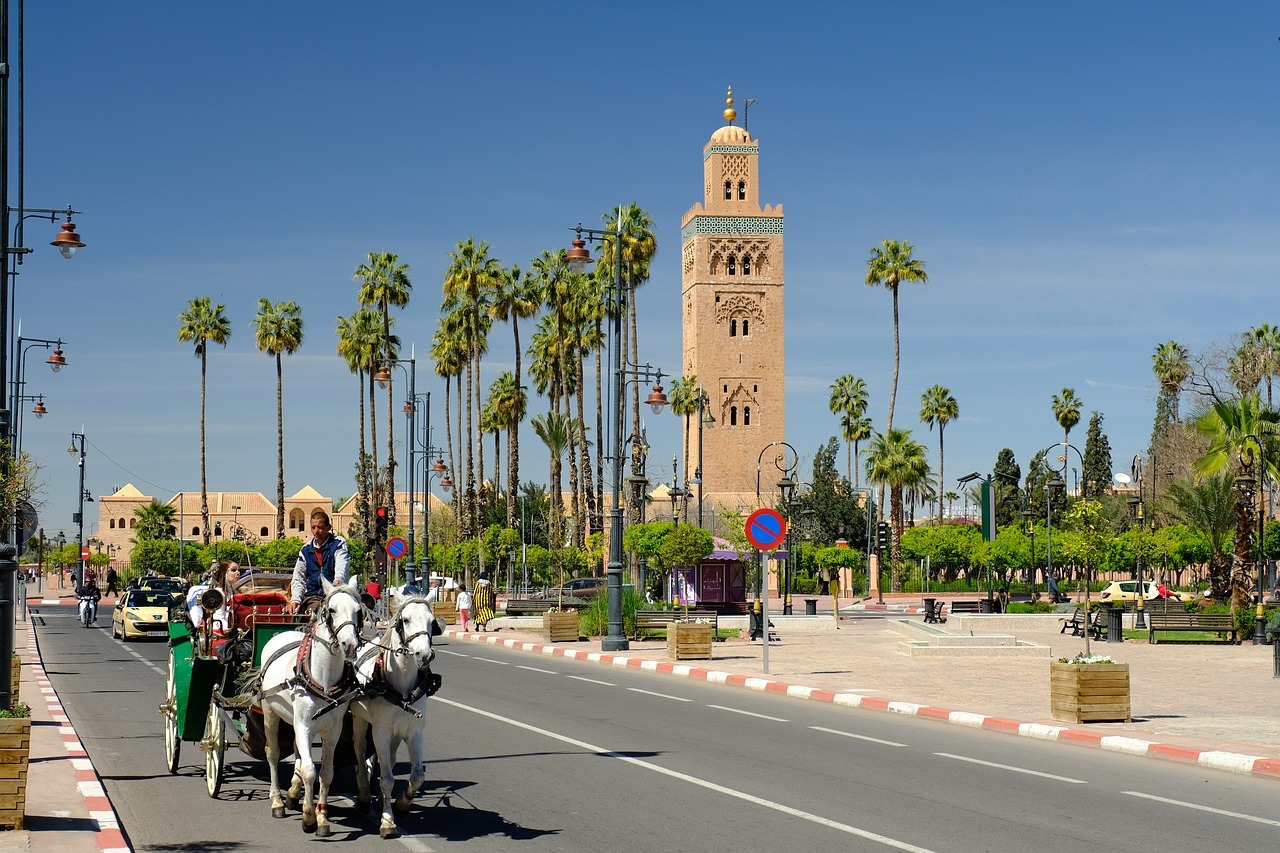19 Best Things to Do in Marrakech

Indulge in the allure of Marrakech, a city that tantalizes with its culinary treasures, bustling markets, and stunning coastal sunsets. Step into Africa’s Capital of Culture, where vibrant colors, lively sounds, and aromatic scents greet you at every turn. Here, the pulse of life is palpable—everyone and everything is in constant motion, inviting you to join the vibrant flow.
For food enthusiasts, Marrakech boasts an array of exquisite Moroccan dining spots, many perched on rooftops, offering a delightful culinary experience. Yet, the city isn’t just for food connoisseurs; it’s a haven for those seeking architectural marvels, museum explorations, and the captivating charm of its bustling souks. Whatever your passion, Marrakech has something to satiate your wanderlust. Let’s explore the finest offerings this city has to offer this year.
Jemaa el-Fna Square
This expansive square lies at the core of Marrakech’s medina, a UNESCO World Heritage site. It’s a bustling hub teeming with snake charmers, street performers, and enthusiastic henna artists.
Locals and tourists flock to Jemaa el-Fna nightly for its vibrant energy, non-stop street theater, and captivating activities. Enjoy delicious bites from barbecue stalls, savor the music, and cap off the experience at a rooftop bar, marveling at the breathtaking sunset.
Places to Eat and Drink in Marrakech
Marrakech boasts a wide range of restaurants that cater to various tastes, offering a delightful culinary experience. For traditional Moroccan cuisine, we highly recommend Cafe Atay, where you can savor delicious tagines and couscous. Another excellent option is Cafe Clock, known for its fusion dishes that blend Moroccan and international flavors.
One of the unique features of Moroccan architecture is the presence of flat roofs, providing an ideal setting for rooftop bars. Treat yourself to a refreshing mint tea at a rooftop cafe overlooking Jemaa el Fnaa, immersing yourself in the vibrant atmosphere of the square. Alternatively, visit the Maison de la Fotagraphie museum, which boasts the highest rooftop bar in the medina, offering breathtaking views of the city.
Know that Marrakesh is an Islamic city, and drinking alcohol is prohibited outside of designated bars. While many establishments do not serve alcohol, it is a good idea to research in advance about places that offer or embrace the opportunity to enjoy a dry trip, discover the rich flavors of Moroccan cuisine, and immerse yourself in the local culture.
Stay in a Traditional Riad
Getting yourself in the beauty of Moroccan architecture is best experienced by staying in a traditional riad, a guesthouse that showcases stunning details. From the outside, riads often exhibit a simple sandy color and unassuming architecture. However, upon entering, a whole new world unfolds.
Inside, you will discover a captivating realm adorned with vibrant colored tiles, intricate patterns, and lush greenery, typically arranged around a mesmerizing swimming pool. The ambiance of a riad offers a peaceful and serene experience, providing a tranquil oasis away from the bustling noises of Marrakech.
Staying in a riad allows you to truly appreciate the remarkable craftsmanship and attention to detail that characterizes Moroccan architecture. It offers a retreat where you can relax and unwind, surrounded by the enchanting beauty that lies within these architectural gems.
Ben Youssef Madrasa
Local mosques in Marrakech boast some of the city’s most stunning artwork. Unfortunately, as these sites are generally closed to non-Muslims, experiencing the grandeur of Islamic design is best done at Ali Ben Youssef Madrasa.
Founded in the 14th century, the madrasa served as the largest Qurʾānic school in North Africa at one point. This architectural wonder reflects Moroccan and Andalusian styles. The highlight is its large, awe-inspiring central courtyard. Here, a shallow reflecting pool, intricately tiled, is surrounded by walls adorned with mosaic tilework (zellij) and calligraphic friezes.
At one end stands an elaborately decorated prayer niche made of fine stucco, featuring carved latticed balconies above. The student rooms surrounding the courtyard, in contrast, lack decoration, adding a mysterious allure to Ali Ben Youssef Madrasa.
Bahia Palace
Bahia Palace, translating to ‘beautiful palace,’ emerged in the late 19th century, becoming the heartbeat of the city’s cultural essence.
Prepare to be astounded by its decor—an opulent display featuring towering, gilded ceilings, and rooms adorned with intricate paintings, mosaics, and stuccos. The vast open garden offers an enchanting space to lose yourself in. Find a serene spot in the shade, allowing hours to simply absorb the rich tapestry of this mesmerizing palace.
Jardin Majorelle
Established by the French painter Jacques Majorelle, this botanical garden hosts an extensive variety of cacti, surpassing what a terrarium could hold. Its focal point is an exquisite indigo-blue Art Deco house.
Jardin Majorelle is a visual spectacle, perfect for capturing stunning photos. It’s a paradise for Instagram enthusiasts. While you might encounter some overly staged photoshoots, the picturesque setting ensures that every picture taken here is nothing short of extraordinary. Arriving early minimizes interruptions for that perfect shot.
El Badi Palace
The grand remnants of Sultan Ahmed al-Mansour’s once-majestic palace stand amidst sunken gardens, encircled by towering ramparts. The decaying towers offer breathtaking panoramic views of the medina.
Despite being in ruins, El Badi Palace grants a captivating glimpse into the historical might and opulence of past Moroccan dynasties. Among the ruins lies a precious gem—the Koutoubia’s minbar, an intricately crafted prayer pulpit by 12th-century Cordoban artisans, adding to the site’s historical allure.
Spices Market in Marrakech
Place des Épices is the traditional spice souk renowned for the rich, aromatic flavors of Moroccan cuisine. Here, merchants offer a variety of spices, from allspice to the popular Ras al Hanout, a blend of over a dozen spices.
This open-air souk boasts an incredible atmosphere. Besides an array of spices, visitors can explore colorful basketry and simply soak in the lively ambiance, observing the hustle from one of the surrounding cafés at the square.
Dar El Bacha Museum
Dar El Bacha, or the Museum of Confluence, is a historic palace in Marrakech, Morocco. Built in the 18th century, it is a great testament to the city’s heritage of Marrakech. The palace’s architecture is a marvel, featuring interconnected buildings, charming courtyards, and lush gardens. Adorned with exquisite mosaics and vibrant tiles, the walls exude beauty and craftsmanship.
In addition to its architectural splendor, Dar El Bacha houses one of the finest tea houses in Marrakech. However, it is advised to arrive early around 8 AM for don’t wait long, which can sometimes be as long as two hours. Get into the grandeur of Dar El Bacha and savor a delightful tea experience amidst this remarkable cultural landmark.
Souk Semmarine
Among Marrakech’s bustling markets, Souk Semmarine, or market, is a prime attraction. It’s a haven for diverse goods, offering everything from leather items to exquisite silverware and crockery.
A visit to Morocco isn’t complete without a memorable souvenir. Embrace the art of bargaining with the traders, be it for a stunning rug or another cherished find. The experience of haggling for that special piece adds an irreplaceable touch to your Moroccan journey.
Maison de la Photographie
Maison de la Photographie is a captivating three-story gallery situated within a converted riad. It showcases a vintage collection of Moroccan photography by Patrick Menac’h and Marrakshi Hamid Mergani. The images beautifully capture Moroccan lifestyles and landscapes spanning from 1870 to 1950, illustrating the enduring essence of the past into the present day.
Immerse yourself in the visual narrative of Morocco’s history, depicted through these evocative images. Additionally, the rooftop café, boasting one of the medina’s highest vantage points, offers a perfect setting to enjoy a refreshing drink while taking in the stunning views.
Musée Yves Saint Laurent
Yves Saint Laurent, the revered French designer, adored Marrakech so deeply that he acquired Jardin Majorelle in 1980. In 2017, the Musée Yves Saint Laurent emerged adjacent to the gardens, dedicated to preserving Yves’s iconic fashion heritage. The museum proudly presents a permanent exhibit showcasing hundreds of garments that span his illustrious 40-year career.
The YSL collection is a marvel, transcending mere fashion appreciation; it’s a testament to the creativity that captivates even non-fashion enthusiasts. Set within one of the city’s most stunning structures, the museum also features a charming garden café, a bookshop, a temporary exhibition hall, and an auditorium, offering a comprehensive cultural experience beyond fashion.
Musée des Confluences
Once the governor’s palace and residence of the infamous Thami El Glaoui, the Lord of the Atlas, this site is now the Musée des Confluences. It showcases the archaeological collection of American Patty Birch and hosts exhibitions delving into the fusion of Eastern and Western cultures.
Arguably the most exquisite construction in the medina, it’s a testament to grand ambition adorned with intricate details. From coffered cedar ceilings to geometric tiling and stucco meticulously worked into elaborate floral motifs, the architecture is awe-inspiring. Additionally, housed within is Bacha Coffee House, renowned as Marrakech’s finest, offering over 40 varieties of brews within the same building.
Musée de Mouassine
This Douiria, a guest apartment, is a gem showcasing the splendid 16th-century Saadian architecture, crafted by a noble chorfa family. It preserves its exquisite original decor, providing a stunning backdrop for insightful exhibitions and musical gatherings.
Every Monday and Friday, from October to May, the museum hosts classical Moroccan music concerts. Nestled in this picturesque setting, the events are truly atmospheric, accompanied by tea and pastries, enhancing the overall experience.
The Mellah Jewish Quarter
The Mellah represents Marrakech’s Jewish quarter, having undergone extensive renovations. Noteworthy sites include the Al Azama synagogue and the remarkable Miara cemetery.
Tours offer a fascinating glimpse into an intriguing part of Marrakech’s and Morocco’s history. Often overlooked by general tourists, this area remains relatively unexplored, primarily frequented by Jewish heritage groups. It’s a chance to discover this unique facet before it gains widespread attention.
Souk Cuisine
Souk Cuisine offers cooking classes with a unique approach. The experience begins with a souk tour, shopping for ingredients before transitioning to a riad where local women impart culinary skills.
Given the significant role of food in Moroccan culture, this course offers a fantastic opportunity to delve into the country’s traditions. Not only do you learn, but you’ll also craft some of the most delicious tagines in town, making it a flavorful exploration of Moroccan cuisine.
Café Clock
Café Clock is a unique blend of a restaurant, café, and cultural hub, offering date milkshakes, camel burgers, and diverse activities like storytelling workshops, calligraphy classes, oud lessons, and Gnaoua jam sessions.
It’s an immersive journey into Moroccan culture, inviting visitors to participate in various activities. Moreover, each camel burger purchase contributes 10 dirhams to charity, adding a meaningful touch to the experience.
Gueliz the New Town
Situated just west of the medina, Gueliz represents Marrakech’s 30s-era New Town. Here, you’ll discover European-style shopping malls, charming homeware boutiques, and an array of top-notch bars and restaurants.
Gueliz offers the modern essence of Marrakech. It’s home to the city’s finest restaurants and a laid-back atmosphere, providing a delightful contrast to the bustling intensity of the medina.
Saadian Tombs
The Chamber of the Twelve Columns within the Saadian Tombs stands as the epitome of Moroccan architectural beauty. This meticulously designed space houses the tombs of three crucial Sultans from the Saadian dynasty. Their ornate resting places—beautiful burial rooms adorned with Italian marble, arches laced with gold, intricately carved oak, and extensive tiling—emphasize their significance in society.
The opulence extends to the mausoleum of Sultan Ahmed al-Mansour’s mother, while his wives and advisors had less lavish final resting spots located in the garden outside.
In total, there are approximately 170 tombs arranged around a splendid garden in the complex. Expect long queues, so arriving early or joining a tour is advisable. Nevertheless, it remains one of the most stunning sights to behold in Marrakech.
Where to Stay in Marrakech
Make your stay in Marrakech unforgettable by choosing to stay in one of the stunning riads available. From luxurious options to more budget-friendly choices, there is accommodation to suit every traveler’s preferences and budget. Riads offer a unique and authentic experience, with their traditional architecture, peaceful courtyards, and attentive service. Get into the beauty of Marrakech by staying in a fantastic riad, where you can relax and unwind after a day of exploration. Enjoy the comfort and hospitality of these traditional Moroccan guesthouses, adding an extra touch of magic to your visit. Booking.com
How to Get to Marrakech
Marrakech is easily accessible by plane, train, or bus. Marrakech Menara Airport serves domestic and international flights, providing convenient air travel options. The city is well-connected by train, allowing easy access to other Moroccan cities like Fes. Additionally, buses offer affordable transportation to various destinations within the country. Morocco road infrastructure is reliable, making bus travel a viable option. Whether you prefer flying, taking the train, or opting for a bus, Marrakech provides multiple transportation choices to ensure a seamless journey to this vibrant city.
How to Get Around Marrakech
The ideal way to explore Marrakech is by foot. Most of the primary attractions listed are in the central medina, which prohibits cars. The streets are narrow, often unmarked, creating a labyrinthine experience; getting lost is part of the adventure when visiting Marrakech.
Our Marrakech itinerary provides comprehensive details on navigating the city, along with a detailed map outlining all the main attractions.
While wandering the medina, you might encounter locals claiming that certain streets or attractions are closed and offering to guide you for a fee. Though there might be various scams, I haven’t encountered any issues. If you’re uncertain, referring to our safety guide in Marrakech can be helpful.
Best Time to Visit Marrakech
The top time to visit Marrakech is during the shoulder seasons of March to May or September to November. These months offer pleasant temperatures, with warm and sunny weather ideal for exploring the city and enjoying outdoor activities. The wintertime can also be the best time to visit if you are interested in skiing in the Atlas Mountains, as the weather is generally sunny and cooler, and you will enjoy it more. However, it’s worth noting that Marrakech can experience occasional rainfall during the winter. To have the best experience, it’s recommended to avoid the summertime (July & August) when temperatures can be too hot around 50°, making it less comfortable for sightseeing and outdoor activities.
Desert Tour from Marrakech
So if you have more time in Marrakech and want to visit the Sahara desert, we advise you to book a desert tour for 3 days or 4 days, to enjoy your trip and visit many amazing places such as the Atlas Mountains, Ait Ben Haddou, Kasbah of Dades, Todra Valley, and more…..

